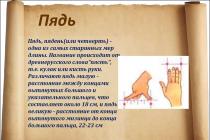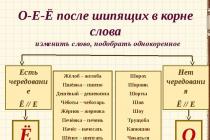Despite the fact that gravity is the weakest interaction between objects in the Universe, its importance in physics and astronomy is enormous, since it is capable of influencing physical objects at any distance in space.
If you are fond of astronomy, you probably wondered what is such a thing as gravity or the law of universal gravitation. Gravity is a universal fundamental interaction between all objects in the universe.
The discovery of the law of gravity is attributed to the famous English physicist Isaac Newton. Probably many of you are familiar with the story of an apple that fell on the head of a famous scientist. Nevertheless, if you look deep into history, you can see that philosophers and scientists of antiquity, for example, Epicurus, thought about the presence of gravity long before his era. Nevertheless, it was Newton who first described the gravitational interaction between physical bodies in the framework of classical mechanics. His theory was developed by another famous scientist - Albert Einstein, who in his general theory of relativity more accurately described the influence of gravity in space, as well as its role in the space-time continuum.
Newton's law of gravitation says that the force of gravitational attraction between two points of mass separated by distance is inversely proportional to the square of the distance and directly proportional to both masses. The force of gravity is long-range. That is, regardless of how a body with mass moves, in classical mechanics its gravitational potential will depend solely on the position of this object at a given moment in time. The greater the mass of an object, the greater its gravitational field - the more powerful gravitational force it possesses. Such cosmic objects as galaxies, stars and planets have the greatest attraction force and, accordingly, sufficiently strong gravitational fields.
Gravitational fields

Earth's gravitational field
The gravitational field is the distance within which the gravitational interaction between objects in the Universe takes place. The greater the mass of an object, the stronger its gravitational field - the more tangible its effect on other physical bodies within a certain space. The gravitational field of the object is potential. The essence of the previous statement is that if we introduce the potential energy of attraction between two bodies, then it will not change after the latter move along a closed loop. From here comes another famous law of conservation of the sum of potential and kinetic energy in a closed loop.
In the material world, the gravitational field is of great importance. It is possessed by all material objects in the Universe that have mass. The gravitational field is capable of influencing not only matter, but also energy. It is due to the influence of the gravitational fields of such large space objects as black holes, quasars and supermassive stars that solar systems, galaxies and other astronomical clusters are formed, which are characterized by a logical structure.
The latest scientific data show that the famous effect of the expansion of the Universe is also based on the laws of gravitational interaction. In particular, the expansion of the Universe is facilitated by powerful gravitational fields, both small and largest of its objects.

Gravitational radiation in a binary system
Gravitational radiation or gravitational wave is a term first introduced into physics and cosmology by the famous scientist Albert Einstein. Gravitational radiation in the theory of gravity is generated by the motion of material objects with variable acceleration. During the acceleration of the object, the gravitational wave, as it were, "breaks away" from it, which leads to fluctuations in the gravitational field in the surrounding space. This is called the gravitational wave effect.
Although gravitational waves are predicted by Einstein's theory of general relativity, as well as other theories of gravity, they have never been directly detected. This is due primarily to their extreme smallness. However, there is indirect evidence in astronomy that can confirm this effect. So, the effect of a gravitational wave can be observed on the example of the approach of binary stars. Observations confirm that the rate of convergence of binary stars to some extent depends on the energy loss of these space objects, which is supposedly spent on gravitational radiation. Scientists will be able to reliably confirm this hypothesis in the near future with the help of a new generation of Advanced LIGO and VIRGO telescopes.
In modern physics, there are two concepts of mechanics: classical and quantum. Quantum mechanics was derived relatively recently and is fundamentally different from classical mechanics. In quantum mechanics, objects (quanta) have no definite positions and velocities, everything here is based on probability. That is, an object can occupy a certain place in space at a certain moment in time. Where to move further, it is impossible to reliably determine, but only with a high degree of probability.
An interesting effect of gravity is that it can bend the space-time continuum. Einstein's theory says that in space around a bunch of energy or any material substance, space-time is curved. Accordingly, the trajectory of particles that fall under the influence of the gravitational field of this substance changes, which makes it possible to predict the trajectory of their motion with a high degree of probability.
Theories of gravity
Today, scientists know over a dozen different theories of gravity. They are divided into classical and alternative theories. The most famous representative of the former is Isaac Newton's classical theory of gravity, which was invented by the famous British physicist back in 1666. Its essence lies in the fact that a massive body in mechanics generates a gravitational field around itself, which attracts smaller objects to itself. In turn, the latter also have a gravitational field, like any other material objects in the Universe.
The next popular theory of gravity was invented by the world famous German scientist Albert Einstein at the beginning of the 20th century. Einstein managed to more accurately describe gravity as a phenomenon, and also to explain its action not only in classical mechanics, but also in the quantum world. His general theory relativity describes the ability of such a force as gravity to influence the space-time continuum, as well as the trajectory of motion of elementary particles in space.

Among the alternative theories of gravity, the most noteworthy, perhaps, is the relativistic theory, which was invented by our compatriot, the famous physicist A.A. Logunov. Unlike Einstein, Logunov argued that gravity is not a geometric, but a real, sufficiently strong physical force field. Among the alternative theories of gravity, scalar, bimetric, quasilinear and others are also known.
- For people who have been in space and returned to Earth, it is quite difficult at first to get used to the force of the gravitational effect of our planet. Sometimes it takes several weeks.
- It has been proven that the human body in a state of weightlessness can lose up to 1% of its bone marrow mass per month.
- The smallest force of attraction in Solar system among the planets is Mars, and the largest is Jupiter.
- The well-known salmonella bacteria, which are the cause of intestinal diseases, behave more actively in a state of weightlessness and can cause much more harm to the human body.
- Among all the known astronomical objects in the Universe, black holes have the greatest force of gravity. A black hole the size of a golf ball can have the same gravitational force as our entire planet.
- The force of gravity on Earth is not the same in all corners of our planet. For example, in the Hudson Bay area in Canada, it is lower than in other regions of the world.
We all went through the law of gravity in school. But what do we actually know about gravity, besides the information put into our heads by school teachers? Let's update our knowledge ...
Fact one: Newton did not discover the law of universal gravitation
Everyone knows the famous parable of the apple that fell on Newton's head. But the fact is that Newton did not discover the law of universal gravitation, since this law is simply absent in his book "Mathematical Principles of Natural Philosophy". In this work, there is neither a formula nor a formulation, of which everyone can be convinced for himself. Moreover, the first mention of the gravitational constant appears only in the 19th century and, accordingly, the formula could not have appeared earlier. By the way, the coefficient G, which reduces the result of calculations by 600 billion times, has no physical meaning, and was introduced to hide the contradictions.
Fact two: falsifying the gravitational attraction experiment
It is believed that Cavendish was the first to demonstrate gravitational attraction in laboratory pigs, using a torsion balance - a horizontal beam with weights at the ends suspended from a thin string. The rocker arm could be turned on a thin wire. According to the official version, Cavendish brought a pair of 158 kg blanks with opposite sides and the rocker turned a small angle. However, the experimental technique was incorrect and the results were falsified, which was convincingly proved by the physicist Andrei Albertovich Grishaev. Cavendish took a long time to tweak and tune the installation so that the results fit Newton's average density of the earth. The technique of the experiment itself provided for the movement of the blanks several times, and the reason for the rotation of the rocker arm was the microvibrations from the movement of the blanks, which were transmitted to the suspension.
This is confirmed by the fact that such simplest installation The 18th century for educational purposes should have been, if not in every school, then at least in the physics departments of universities, in order to show students in practice the result of the law of gravity. However, the Cavendish setting is not used in curricula, and schoolchildren and students take their word for it that two blanks attract each other.
Fact three: the law of gravity does not work during a solar eclipse
If we substitute reference data on the earth, the moon and the sun into the formula of the law of universal gravitation, then at the moment when the moon flies between the earth and the sun, for example, at the time of a solar eclipse, the force of attraction between the sun and the moon is more than 2 times higher than between The Earth and the Moon!According to the formula, the moon would have to leave the earth's orbit and begin to revolve around the sun.

The gravitational constant is 6.6725 × 10−11 m³ / (kg · s²).
The mass of the Moon is 7.3477 × 1022 kg.
The mass of the Sun is 1.9891 × 1030 kg.
The mass of the Earth is 5.9737 × 1024 kg.
The distance between the Earth and the Moon = 380,000,000 m.
The distance between the Moon and the Sun = 149,000,000,000 m.
![]()
Earth and Moon:
6.6725 x 10-11 x 7.3477 x 1022 x 5.9737 x 1024/3800000002 = 2.028 x 1020 H
Moon and sun:
6.6725 x 10-11 x 7.3477 1022 x 1.9891 1030/1490000000002 = 4.39 x 1020 H
2,028 × 1020 H<< 4,39×1020 H
The force of gravity between the Earth and the Moon<< Сила притяжения между Луной и Солнцем
These calculations can be criticized by the fact that the moon is an artificial hollow body and the reference density of this celestial body is most likely not determined correctly.
Indeed, experimental evidence suggests that the Moon is not a solid body, but a thin-walled shell. The authoritative journal Science describes the results of the work of seismic sensors after the impact of the third stage of the rocket on the surface of the Moon, accelerating the Apollo 13 spacecraft: “The seismic call was detected for more than four hours. On Earth, with a missile strike at an equivalent distance, the signal would last only a few minutes. "
The seismic vibrations that decay so slowly are typical of a hollow resonator, not a solid body.
But the Moon, among other things, does not show its attractive properties in relation to the Earth - the Earth-Moon pair does not move around a common center of mass, as it would be according to the law of universal gravitation, and the ellipsoidal orbit of the Earth, contrary to this law, does not become zigzag.

Moreover, the parameters of the orbit of the Moon itself do not remain constant, the orbit, according to scientific terminology, "evolves", and it does so contrary to the law of universal gravitation.
Fact four: the absurdity of the theory of ebb and flow
How so, some will argue, because even schoolchildren know about the ocean tides on Earth, which occur due to the attraction of water to the Sun and the Moon.According to the theory, the gravity of the Moon forms a tidal ellipsoid in the ocean, with two tidal humps, which, due to the diurnal rotation, move along the surface of the Earth.

However, practice shows the absurdity of these theories. Indeed, according to them, a tidal hump with a height of 1 meter in 6 hours should move through the Drake Passage from the Pacific Ocean to the Atlantic. Since water is incompressible, a mass of water would raise the level to a height of about 10 meters, which is not the case in practice. In practice, tidal phenomena occur autonomously in areas of 1000-2000 km.

Laplace was also amazed by the paradox: why in the seaports of France, high water advances sequentially, although, according to the concept of a tidal ellipsoid, it should come there simultaneously.
Fact five: the theory of gravitation of masses does not work
The principle of gravity measurement is simple - gravimeters measure vertical components, and plumb deflection shows horizontal components.
The first attempt to test the theory of gravitation of masses was undertaken by the British in the middle of the 18th century on the shores of the Indian Ocean, where, on the one hand, there is the world's highest rock ridge of the Himalayas, and on the other, a bowl of the ocean filled with much less massive water. But, alas, the plumb line does not deviate towards the Himalayas! Moreover, ultrasensitive instruments - gravimeters - do not detect a difference in the gravity of the test body at the same height both over massive mountains and over less dense seas of a kilometer depth.
To save the accustomed theory, scientists came up with a support for it: they say the reason for this is "isostasy" - there are denser rocks under the seas, and loose rocks under the mountains, and their density is exactly the same to adjust everything to the desired value.
It was also experimentally found that gravimeters in deep mines show gravity that does not decrease with depth. It continues to grow, depending only on the square of the distance to the center of the earth.

Fact six: gravity is not generated by matter or mass
According to the formula of the law of universal gravitation, Two masses, m1 and m2, whose dimensions can be neglected in comparison with the distances between them, are allegedly attracted to each other by a force directly proportional to the product of these masses and inversely proportional to the square of the distance between them. However, in fact, no evidence is known that matter has a gravitational attraction. Practice shows that gravitation is generated not by matter or masses, it is independent of them and massive bodies only obey gravitation.The independence of gravitation from matter is confirmed by the fact that, with rare exceptions, small bodies of the solar system have no gravitational attracting ability completely. With the exception of the Moon, more than six dozen satellites of the planets have no signs of their own gravitation. This has been proven by both indirect and direct measurements, for example, since 2004, the Kasseni probe in the vicinity of Saturn flies from time to time next to its satellites, but no changes in the probe's speed have been recorded. With the help of the same Kasseni, a geyser was discovered on Enceladus, the sixth largest moon of Saturn.

What physical processes must take place on a space piece of ice in order for steam jets to fly into space?
For the same reason, Titan, the largest moon of Saturn, has a gas tail as a consequence of atmospheric drainage.

The asteroid satellites predicted by the theory have not been found, despite their huge number. And in all reports of double, or paired asteroids, which supposedly revolve around a common center of mass, there was no evidence of the rotation of these pairs. The companions happened to be nearby, moving in quasi-synchronous orbits around the sun.
Attempts to launch artificial satellites into asteroid orbit ended in failure. Examples include the NEAR probe, which the Americans drove to the asteroid Eros, or the HAYABUSA probe, which the Japanese sent to the Itokawa asteroid.
Fact seven: Saturn's asteroids do not obey the law of gravity
At one time, Lagrange, trying to solve the three-body problem, received a stable solution for a particular case. He showed that the third body can move along the orbit of the second, all the time being in one of two points, one of which is ahead of the second body by 60 °, and the second is lagging behind by the same amount.
However, two groups of companion asteroids, found behind and in front of Saturn's orbit, and which astronomers happily named Trojans, left the predicted regions, and the confirmation of the law of universal gravitation turned into a puncture.

Fact eight: contradiction with general relativity
According to modern concepts, the speed of light is finite, as a result, we see distant objects not where they are at the moment, but at the point from which the ray of light we saw started. But how fast is gravitation spreading?After analyzing the data accumulated by that time, Laplace found that "gravity" travels faster than light by at least seven orders of magnitude! Modern measurements on the reception of pulsars pulses have pushed the propagation speed of gravity even further - at least 10 orders of magnitude faster than the speed of light. In this way, experimental research is in contradiction with the general theory of relativity, on which official science still relies, despite its complete inconsistency.
Fact nine: gravity anomalies
There are natural anomalies of gravity, which also do not find any intelligible explanation in official science. Here are some examples:Fact ten: research on the vibrational nature of antigravity
There is a large number of alternative studies with impressive results in the field of antigravity, which fundamentally refute the theoretical calculations of official science.Some researchers are analyzing the vibrational nature of antigravity. This effect is clearly represented in modern experience, where the droplets hang in the air due to acoustic levitation. Here we see how, with the help of a sound of a certain frequency, it is possible to confidently hold liquid droplets in the air ...
At first glance, the effect is explained by the principle of a gyroscope, but even such a simple experience for the most part contradicts gravity in its modern sense.
Few people know that Viktor Stepanovich Grebennikov, a Siberian entomologist who studied the effect of cavity structures in insects, described antigravity phenomena in insects in his book "My World". Scientists have known for a long time that massive insects, such as the May beetle, fly rather contrary to the laws of gravity, and not because of them.
Moreover, on the basis of his research, Grebennikov created an anti-gravity platform.
Viktor Stepanovich died under rather strange circumstances and his developments were partially lost, but some part of the prototype of the anti-gravity platform survived and can be seen in the Grebennikov Museum in Novosibirsk.

Another practical application of anti-gravity can be seen in Homestead, Florida, where there is a strange structure of coral monolithic boulders, which is popularly called Coral Castle. It was built by a native of Latvia - Edward Lidskalnin in the first half of the 20th century. This thin man didn’t have any tools, he didn’t even have a car or any equipment at all.


It was not used at all by electricity, also due to its absence, and nevertheless somehow it went down to the ocean, where it hewed out multi-ton stone blocks and somehow delivered them to its site, laying it out with perfect accuracy.


After Ed's death, scientists began to carefully study his creation. For the sake of the experiment, a powerful bulldozer was driven in, and an attempt was made to move one of the 30-ton boulders of the coral castle. The bulldozer roared, skidded, but never moved the huge rock.
A strange device was found inside the castle, which scientists called a DC generator. It was a massive structure with many metal parts. On the outside of the device, 240 permanent strip magnets were embedded. But how Edward Leedskalnin actually made the multi-ton blocks move remains a mystery to this day.

Known studies of John Searle, in whose hands unusual generators revived, revolved and produced energy; discs with a diameter of half a meter to 10 meters were lifted into the air and made controlled flights from London to Cornwall and back.

The professor's experiments were repeated in Russia, the USA and Taiwan. In Russia, for example, in 1999, under No. 99122275/09, a patent application was registered for a “device for the generation of mechanical energy”. Vladimir Vitalievich Roshchin and Sergei Mikhailovich Godin, in fact, reproduced the SEG (Searl Effect Generator) and conducted a number of studies with it. The result was a statement: you can get 7 KW of electricity without spending; the rotating generator lost up to 40% in weight.
The equipment of Searle's first laboratory was taken to an unknown destination while he himself was in prison. The installation of Godin and Roshchin simply disappeared; all publications about her, with the exception of the application for an invention, have disappeared.
Also known is the Hutchison Effect, named after the Canadian engineer-inventor. The effect is manifested in the levitation of heavy objects, the alloy of dissimilar materials (for example, metal + wood), abnormal heating of metals in the absence of burning substances near them. Here is a video of these effects:
Whatever gravity really is, it should be admitted that official science is completely incapable of clearly explaining the nature of this phenomenon..
Yaroslav Yargin
We get an initial understanding of gravity in school. There we are usually told that there is such an amazing force that keeps everyone on Earth, and only thanks to it we do not fly into outer space and do not go upside down. This is where the fun practically ends, because at school we are told only the most basic and simple things. In reality, there is a lot of controversy about global attraction, scientists are proposing new theories and ideas, and there are many more nuances than you can imagine. In this collection, you will find several very interesting facts and theories about gravitational effects, which either were not included in the school curriculum, or they became known not so long ago.
10. Gravity is a theory, not a proven law
There is a myth that gravity is law. If you try to do online research on this topic, any search engine will offer you many links about Newton's Law of Gravity. However, in the scientific community, laws and theories are completely different concepts. Scientific law is an irrefutable fact based on proven data that clearly explains the essence of the phenomena taking place. Theory, in turn, is a kind of idea with the help of which researchers try to explain certain phenomena.
If we describe the gravitational interaction through scientific terms, a relatively literate person immediately becomes completely clear why universal gravitation is considered on a theoretical plane, and not as a law. Since scientists still do not have the opportunity to study the gravitational forces of every planet, satellite, star, asteroid and atom in the Universe, we have no right to recognize universal gravitation as a law.
The robotic probe Voyager 1 traveled 21 billion kilometers long, but even at such a distant distance from Earth, it barely left our planetary system. The flight lasted 40 years and 4 months, and during all this time, the researchers received not much data to transfer thinking about gravity from a theoretical field to the category of laws. Our Universe is too big, and so far we know too little ...
9. There are many gaps in the theory of gravity. We have already found out that gravity is just a theoretical concept. Moreover, in this theory, it turns out, there are still many gaps that clearly indicate its relative inferiority. Many inconsistencies were noted not just within our solar system, but even here on Earth.
We have already found out that gravity is just a theoretical concept. Moreover, in this theory, it turns out, there are still many gaps that clearly indicate its relative inferiority. Many inconsistencies were noted not just within our solar system, but even here on Earth.
For example, according to the theory of universal gravitation on the moon, the sun's gravitational force should be felt much stronger than the earth's gravity. It turns out that the moon should revolve around the sun, and not around our planet. But we know that the Moon is exactly our satellite, and for this it is sometimes enough just to raise our eyes into the night sky.
At school, we were told about Isaac Newton, who fell on his head with a fateful apple, which inspired him to the idea of the theory of universal gravitation. Even Newton himself admitted that his theory had certain flaws. At one time, it was Newton who became the author of a new mathematical concept - fluxium (derivatives), which helped him in the formation of that very theory of gravitation. Fluxia may not sound so familiar to you, but in the end, they have firmly entered the world of the exact sciences.
Today, in mathematical analysis, a method of differential calculus is often used, based precisely on the ideas of Newton and his colleague Leibniz. However, this branch of mathematics is also quite incomplete and not devoid of its flaws.
8. Gravitational waves Albert Einstein's general theory of relativity was proposed in 1915. Around the same time, the hypothesis of gravitational waves appeared. Until 1974, the existence of these waves remained purely theoretical.
Albert Einstein's general theory of relativity was proposed in 1915. Around the same time, the hypothesis of gravitational waves appeared. Until 1974, the existence of these waves remained purely theoretical.
Gravitational waves can be compared to ripples on the canvas of the space-time continuum, which appears as a result of large-scale events in the Universe. Such events can be a collision of black holes, a change in the speed of rotation of a neutron star, or a supernova explosion. When something like this happens, gravitational waves travel along a space-time continuum like ripples in water from a stone falling into it. These waves travel through the universe at the speed of light. We do not see catastrophic events so often, so it takes us many years to identify gravitational waves. That is why it took scientists more than 60 years to prove their existence.
For nearly 40 years, scientists have been studying the first evidence of gravitational waves. As it turned out, this ripple arises in the process of merging a binary system of very dense and heavy gravitationally bound stars orbiting a common center of mass. Over time, the components of a binary star move closer together, and their speed gradually decreases, as predicted by Einstein in his theory. The magnitude of gravitational waves is so small that in 2017 they even awarded the Nobel Prize in physics for their experimental detection.
7. Black holes and gravity Black holes are one of the biggest mysteries in the universe. They appear during the gravitational collapse of a large enough star that goes supernova. When a supernova explosion occurs, a significant mass of stellar matter is thrown into outer space. What is happening can provoke the formation of a space-time region in space, in which the gravitational field becomes so strong that even quanta of light are not able to leave this place (this black hole). Black holes are not formed by gravity per se, but it still plays a key role in observing and studying these areas.
Black holes are one of the biggest mysteries in the universe. They appear during the gravitational collapse of a large enough star that goes supernova. When a supernova explosion occurs, a significant mass of stellar matter is thrown into outer space. What is happening can provoke the formation of a space-time region in space, in which the gravitational field becomes so strong that even quanta of light are not able to leave this place (this black hole). Black holes are not formed by gravity per se, but it still plays a key role in observing and studying these areas.
It is the gravity of black holes that helps scientists detect them in the universe. Because gravitational pull is incredibly powerful, researchers can sometimes note its effect on other stars or the gases surrounding these areas. When a black hole pulls in gases, a so-called accretion disk is formed, in which matter is accelerated to such high speeds that it begins to produce the strongest radiation from heating. This glow can also be detected in the X-ray range. It is thanks to the accretion phenomenon that we were able to prove the existence of black holes (using special telescopes). It turns out that if not for gravity, we would not even know about the existence of black holes.
6. The theory of black matter and black energy Approximately 68% of the universe is made up of dark energy, and 27% is allocated to dark matter. In theory. Despite the fact that so much space has been allocated in our world of dark matter and dark energy, we know very little about them.
Approximately 68% of the universe is made up of dark energy, and 27% is allocated to dark matter. In theory. Despite the fact that so much space has been allocated in our world of dark matter and dark energy, we know very little about them.
We supposedly know that dark energy has a variety of properties. For example, guided by the same Einstein's theory of gravity, scientists suggested that dark energy is constantly expanding. By the way, scientists initially believed that Einstein's theory would help them prove that over time, gravitational influence slows down the expansion of the Universe. However, in 1998, data obtained by the Hubble Space Telescope (Hubble) gave reason to believe that the universe is expanding only at an increasing rate. At the same time, scientists came to the conclusion that the theory of gravity is not able to explain the fundamental phenomena occurring in our Universe. This is how the hypothesis of the existence of dark energy and dark matter appeared, designed to substantiate the acceleration of the expansion of the Universe.
5. Gravitons In school, we are told that gravity is force. But it can be something more ... It is possible that gravity in the future will be considered as a manifestation of a particle called graviton.
In school, we are told that gravity is force. But it can be something more ... It is possible that gravity in the future will be considered as a manifestation of a particle called graviton.
Hypothetically, gravitons are massless elementary particles that emit a gravitational field. To date, physicists have not yet proven the existence of these particles, but they already have many theories about why these gravitons must certainly exist. One of these theories says that gravity is the only force (of the 4 fundamental forces of nature or interactions) that has not yet been associated with any elementary particle or any structural unit.
Gravitons may exist, but they are incredibly difficult to recognize. Physicists assume that gravitational waves are composed of these elusive particles. To identify gravitational waves, the researchers conducted many experiments, in one of which they used mirrors and lasers. An interferometric detector helps to detect the displacements of mirrors even at the most microscopic distances, but, unfortunately, this does not allow detecting changes associated with such tiny particles as gravitons. In theory, for such an experiment, scientists would be useful for mirrors so heavy that when they collapsed, black holes could appear.
In general, it is not possible to detect or prove the existence of gravitons in the near future. So far, physicists are observing the Universe and hope that it is there that they will find answers to their questions and be able to detect manifestations of gravitons somewhere outside ground-based laboratories.
4. The theory of the origin of wormholes Wormholes, wormholes, or wormholes are another great mystery of the universe. It would be cool to get into some kind of space tunnel and travel at the speed of light to get to another galaxy in no time. These fantasies have already been used more than once in fantastic thrillers. If there are indeed wormholes in the universe, such jumps could be quite possible. At the moment, scientists do not have any evidence for the existence of wormholes, but some physicists believe that these hypothetical tunnels can be created using the manipulation of gravity.
Wormholes, wormholes, or wormholes are another great mystery of the universe. It would be cool to get into some kind of space tunnel and travel at the speed of light to get to another galaxy in no time. These fantasies have already been used more than once in fantastic thrillers. If there are indeed wormholes in the universe, such jumps could be quite possible. At the moment, scientists do not have any evidence for the existence of wormholes, but some physicists believe that these hypothetical tunnels can be created using the manipulation of gravity.
Einstein's general theory of relativity allows the possibility of exciting the imagination of molehills. Taking into account the writings of the legendary scientist, another physicist, Ludwig Flamm, tried to describe how the force of gravity could distort time space so that a new tunnel forms in it, a bridge between one area of the fabric of physical reality and another. There are, of course, other theories.
3. Planets also have a gravitational effect on the Sun We already know that the sun's gravitational field affects all objects in our planetary system, which is why they all revolve around our only star. By the same principle, the Earth is connected with the Moon, and that is why the Moon revolves around our home planet.
We already know that the sun's gravitational field affects all objects in our planetary system, which is why they all revolve around our only star. By the same principle, the Earth is connected with the Moon, and that is why the Moon revolves around our home planet.
However, each planet and any other celestial body with sufficient mass in our solar system also has its own gravitational fields that affect the sun, other planets and all other space objects. The magnitude of the exerted force of attraction depends on the mass of the object and the distance between the celestial bodies.
In our solar system, thanks to the gravitational interaction, all objects rotate in their given orbits. The strongest gravitational pull is, of course, at the Sun. By and large, all celestial bodies with sufficient mass have their own gravitational field and affect other objects with significant mass, even if they are several light years away.
2. Microgravity We all have seen more than once photographs of astronauts soaring through orbital stations or even going beyond the ships in special protective spacesuits. You are probably used to thinking that these scientists usually tumble in space without feeling any attraction, because it is not there. And you would be very wrong if so. There is attraction in space too. It is customary to call it microgravity, because it is almost imperceptible. It is thanks to microgravity that astronauts feel as light as a feather and soar freely in space. If there was no gravity at all, the planets would simply not revolve around the Sun, and the Moon would have left Earth's orbit long ago.
We all have seen more than once photographs of astronauts soaring through orbital stations or even going beyond the ships in special protective spacesuits. You are probably used to thinking that these scientists usually tumble in space without feeling any attraction, because it is not there. And you would be very wrong if so. There is attraction in space too. It is customary to call it microgravity, because it is almost imperceptible. It is thanks to microgravity that astronauts feel as light as a feather and soar freely in space. If there was no gravity at all, the planets would simply not revolve around the Sun, and the Moon would have left Earth's orbit long ago.
The further the object is from the center of gravity, the weaker the force of gravity. It is microgravity that acts on the ISS, because all objects there are much farther from the Earth's gravitational field than even you are right here now. Gravity also weakens at other levels. For example, let's take one single atom. This is such a tiny particle of matter that a rather modest gravitational force is also acting in its case. As the atoms combine into groups, this force, of course, grows.
1. Time travel The idea of time travel has fascinated humanity for quite some time. Many theories, including the theory of gravity, give hope that such travel will in fact one day become possible. According to one of the concepts, gravity forms a kind of bend in the space-time continuum, which makes all objects in the Universe move along a curved trajectory. As a result, objects in space move slightly faster than objects on Earth. More precisely, here's an example - clocks on space satellites every day ahead of your home alarms by 38 microseconds (0.000038 seconds).
The idea of time travel has fascinated humanity for quite some time. Many theories, including the theory of gravity, give hope that such travel will in fact one day become possible. According to one of the concepts, gravity forms a kind of bend in the space-time continuum, which makes all objects in the Universe move along a curved trajectory. As a result, objects in space move slightly faster than objects on Earth. More precisely, here's an example - clocks on space satellites every day ahead of your home alarms by 38 microseconds (0.000038 seconds).
Since gravity in space makes objects move faster than on Earth, astronauts can actually be considered time travelers at the same time. However, this trip is so insignificant that upon returning home, neither the astronauts themselves, nor their loved ones notice any fundamental difference. But this does not negate one very interesting question - is it possible to use gravitational influence for time travel, as shown in science fiction films?
The inhabitants of planet Earth take gravity for granted. It is known that Isaac Newton developed the theory of universal gravitation due to the fact that an apple fell from a tree on his head. But in reality, Earth's gravity is much more than a fruit that has fallen from a tree. In our review, there are some curious facts about this power.
1. Toilet physics

On Earth, people want to relieve themselves as soon as their bladder fills 1/3 of its maximum volume. This is due to the action of gravity on each of us. That is why astronauts on the ISS do not feel the need to urinate until their bladder is full.
2. Unpretentious colonization
Gravity is a very important issue when colonizing other worlds. In theory, people can live on planets whose gravitational force differs from the Earth's by no more than three times. Otherwise, the blood supply to the brain will be disrupted.
3. Height of mountains

In theory, gravity determines the maximum height of the hills that form on the planet. So for the Earth (again in theory) mountains cannot exceed 15 kilometers.
4. Lunar physics

During the historic Apollo mission, astronauts who landed on the lunar surface tested the effect of Galileo's theory of free fall acceleration. It turned out that objects on the moon, regardless of their mass, fall faster than on Earth. The reason for this is the lack of air and, as a result, resistance.
5. Loser star

Many scientists consider Jupiter to be a failed star. The planet has a strong enough gravitational field in order to gain the necessary mass of the star, but it has not a strong enough field in order to start transforming into another star.
6. Teleportation

If you take and remove the Solce somewhere in an instant, then the solar system will experience the effect of its gravitational field for some time. For the Earth, in theory, this "happiness" would last about 8 minutes, after which the celestial bodies would begin to lose their orbits.
7. Mountains on the stars

If our Sun ever turns into a neutron star, then according to scientists' calculations, the gravity on it will be so powerful that the height of the largest mountain on its surface would not be able to exceed 5 millimeters.
8. Mournful singing of the stars

The action of the gravitational field of celestial bodies after their disappearance is not at all a dry theory. Our solar system and our home planet are constantly affected by the gravitational field of other stars. Considering the speed of field propagation in space, many of these stars ceased to exist for a very, very long time.
9. Candles in space

If you light a candle in the absence of a gravitational field, then its fire will be round. Moreover, the color of the flame will be blue.
10. Soda kills

Drinking carbonated drinks in the absence of gravity is definitely not worth it. Why? This is because the absence of gravity completely changes the principle of gas propagation in the human body. At best, this can provoke an attack of severe vomiting. That is why the astronauts on the ISS do not drink soda.
All those who are interested in science will be interested in learning about.
The science
Here on Earth, we take gravity for granted. However, the force of gravity by which objects pull towards each other in proportion to their mass is much more than a falling apple on Newton's head. Below are the strangest facts about this universal power.
It's all in our head
The force of attraction is a constant and consistent phenomenon, but our perception of this force is not. According to a study published in April 2011 in the journal PLoS ONE, humans are able to make more accurate judgments about falling objects when they are seated.
The researchers concluded that our perception of gravity is less based on the actual visual direction of force and more on the "orientation" of the body.
The findings could lead to a new strategy to help astronauts cope with microgravity in space.
Hard descent to the ground
 The experience of astronauts has shown that the transition from a state of weightlessness and back can be very difficult for the human body. In the absence of gravity, muscles begin to atrophy, and bones also begin to lose bone mass. According to NASA, astronauts can lose up to 1 percent of their bone mass per month.
The experience of astronauts has shown that the transition from a state of weightlessness and back can be very difficult for the human body. In the absence of gravity, muscles begin to atrophy, and bones also begin to lose bone mass. According to NASA, astronauts can lose up to 1 percent of their bone mass per month.
Upon returning to earth, the organisms and minds of astronauts need a period of time to recover. The blood pressure, which becomes the same throughout the body in space, should return to normal functioning, in which the heart works well and the brain receives a sufficient amount of food.
Sometimes the restructuring of the body affects astronauts extremely hard, both physically (repeated fainting, etc.) and emotionally. For example, one astronaut told how, upon returning from space, he broke a bottle of aftershave at home, because he forgot that when he released it into the air, it would fall and break, rather than float in it.
To Lose Weight Try Pluto
 On this dwarf planet, a person weighing 68 kilograms will weigh no more than 4.5 kilograms.
On this dwarf planet, a person weighing 68 kilograms will weigh no more than 4.5 kilograms.
That being said, on the other hand, on the planet with the highest level of gravity, Jupiter, the same person would weigh about 160.5 kg.
A person will probably also feel like a feather on Mars, since the force of gravity on this planet is only 38 percent of that on earth, that is, a 68-kilogram person will feel how light his gait is, since he will weigh only 26 kg.
Different gravity
 Even on earth, gravity is not the same everywhere. Due to the fact that the shape of the globe is not an ideal sphere, its mass is distributed unevenly. Therefore, uneven mass means uneven gravity.
Even on earth, gravity is not the same everywhere. Due to the fact that the shape of the globe is not an ideal sphere, its mass is distributed unevenly. Therefore, uneven mass means uneven gravity.
One mysterious gravity anomaly is observed in Hudson Bay in Canada. In this region, the force of gravity is lower than in others, and a 2007 study revealed the cause is melting glaciers.
The ice that once covered this area during the last ice age has melted long ago, but the Earth has not completely rid itself of this burden. Since the gravity of the region is proportional to the mass of this region, and the "ice trail" has pushed some of the earth's mass aside, gravity has become weaker here. Minor crustal deformation explains 25-45 percent of the unusually low gravitational force, among other things, it is also "blamed" for the movement of magma in the Earth's mantle.
Without gravity, some viruses would be stronger
 Bad news for space cadets: some bacteria are becoming intolerable in space.
Bad news for space cadets: some bacteria are becoming intolerable in space.
In the absence of gravity, bacteria change at least the activity of 167 genes and 73 proteins.
Mice that ate food with these salmonella sickened much faster.
In other words, the danger of contamination does not necessarily come from space; it is more likely that our own bacteria are gathering strength to attack.
Black holes in the center of the galaxy
 Named this way because nothing, not even light, can escape their attraction, black holes are some of the most destructive objects in the universe. At the center of our galaxy lies a massive black hole weighing 3 million suns. Sounds intimidating, right? However, according to experts from Kyoto University, this black hole is currently "just resting."
Named this way because nothing, not even light, can escape their attraction, black holes are some of the most destructive objects in the universe. At the center of our galaxy lies a massive black hole weighing 3 million suns. Sounds intimidating, right? However, according to experts from Kyoto University, this black hole is currently "just resting."
In fact, the black hole is not dangerous for us, earthlings, because it is very far away and behaves extremely calmly. However, in 2008 it was reported that about 300 years ago, this hole was sending out bursts of energy. Another study published in 2007 found that a few thousand years ago, "galactic hiccups" sent a small amount of matter, the size of Mercury, into this very hole, causing a powerful explosion.
This black hole, called Sagittarius A *, has a relatively blurry shape compared to other black holes. "This weakness means that stars and gas rarely approach the black hole at an unsafe distance," says Frederick Baganoff, a research associate at MIT. "Great appetite is present, but not satisfied."














